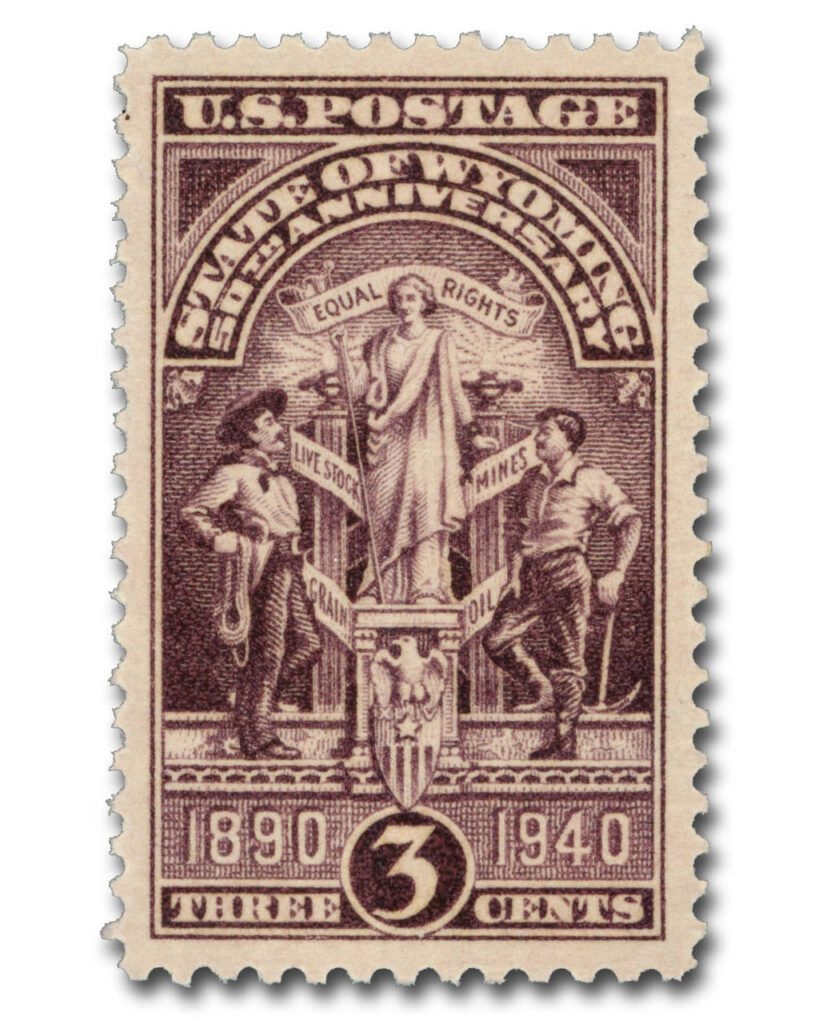On November 4, 1924, Wyoming once again lived up to its nickname, “The Equality State,” when voters elected Nellie Tayloe Ross as the first female governor in American history. Her election was another milestone in Wyoming’s long record of advancing women’s rights and political equality.
Wyoming had earned its reputation decades earlier. In 1869, the Wyoming Territory became the first in the nation to grant women the right to vote, hold public office, and serve on juries. Just a year later, Esther Hobart Morris became the first woman in the United States to serve as a justice of the peace, presiding in South Pass City. When Wyoming joined the Union in 1890, it proudly became the first state where women had full suffrage, cementing its title as a pioneer in equality.
Nellie Tayloe Ross, however, had never planned on entering politics herself. Born in 1876 in St. Joseph, Missouri, and raised in Missouri and Kansas, Nellie’s early life was marked by hardship. Her family had suffered severe losses during the Civil War, leaving them with limited means. Intelligent and determined, Nellie became a teacher and later married William Bradford Ross, a lawyer and fellow Democrat, in 1902. The couple eventually moved to Cheyenne, Wyoming, where William built a career in law and politics.
Although Nellie preferred a quiet life focused on family and community, she often discussed policy and public issues with her husband. When William Ross was elected governor of Wyoming in 1922, Nellie served as an active and thoughtful First Lady, often advising her husband behind the scenes. She believed in honest, efficient government and was particularly interested in education, fiscal responsibility, and social welfare.
Tragedy struck in October 1924, when Governor Ross died suddenly of appendicitis just weeks before the next election. Nellie, only 48 years old, was left a widow with two sons. As the state mourned, the chairman of the Wyoming Democratic Committee approached her with a startling proposal — to run for governor in her late husband’s place.
Nellie hesitated. Friends and family warned her that politics was still “a man’s job” and that the campaign could damage her emotionally and financially. Yet, facing an uncertain future, she made her decision just 45 minutes before the filing deadline on October 14. She would run.

Though Nellie refused to campaign personally, her supporters worked tirelessly on her behalf. Her image as a dignified widow devoted to her husband’s ideals appealed to voters across the state. On November 4, 1924, Nellie Tayloe Ross won the election by 8,000 votes — an even larger margin than her husband’s victory two years earlier. When she was inaugurated on January 5, 1925, she made history as the first woman ever to hold the office of governor in the United States.
Governor Ross pledged to continue three of her husband’s main policies: reducing state spending, offering low-interest loans to farmers and ranchers, and supporting Prohibition. But she also introduced eight proposals of her own, designed to improve efficiency, safety, and fairness in Wyoming’s government and economy. Her proposals included:
- Creating budgets for cities, counties, and school districts to improve fiscal management.
- Enacting state bank regulations to protect depositors.
- Using mineral royalties to fund public schools.
- Strengthening coal mine safety standards.
- Reducing child labor in the state.

These five were the ones ultimately supported by the Republican-controlled legislature. Her other initiatives—such as additional education reforms and social welfare improvements—were blocked by political opposition.
Despite serving as a lone Democrat surrounded by Republicans, Nellie governed with grace and determination. Her calm, capable leadership earned national respect and made her a symbol of women’s expanding role in public life. Although she narrowly lost her bid for re-election in 1926, Nellie’s pioneering spirit endured.

In 1933, President Franklin D. Roosevelt appointed her as the first female director of the US Mint, a position she held for 20 years. In that role, she modernized operations and promoted efficiency, becoming one of the longest-serving and most successful directors in the Mint’s history. During her tenure at the Mint, Ross oversaw significant innovation and expansion: the introduction of new coin designs such as the Roosevelt dime and the Jefferson nickel, as well as emergency wartime coins like the steel penny. She also managed growth in production, modernized operations, and helped maintain coinage and bullion management during challenging economic and global circumstances.
After stepping down, Ross lived in Washington, DC. She contributed articles to women’s magazines, traveled extensively, and in 1972 made her last trip back to Wyoming at the age of 96. She died in Washington on December 19, 1977, at the age of 101, making her one of the oldest former state governors in the United States at the time of her death.
Ross’s papers and personal collection are preserved at the University of Wyoming’s American Heritage Center, and the university campus also honors her with Ross Hall (which bears a brass plaque). She’s also the namesake for Ross Lake in Fremont County.
| FREE printable This Day in History album pages Download a PDF of today’s article. Get a binder or other supplies to create your This Day in History album. |
Discover what else happened on This Day in History.






Truly First Lady Governor in the US.
a TRUELY FIRST LADY IN ALL RESPECTS. DESERVES A PLACE IN THE USPS’ ARCHIVES. SO HOW ‘BOUT IT?. FOR THOSE WHO ARE NOT LIBERAL ENOUGH …A STAMP WOULD BE NICE.
I found this article to be very interesting!
Wonderful article about a very great lady in the history of our United States. Thanks, Mystic.
A “Democrat surrounded by Republicans who opposed many of her ideas.” Sound like anybody in politics today?…maybe the President of the United States.
As always very interesting. However now I have to figure out which five proposals were supported.